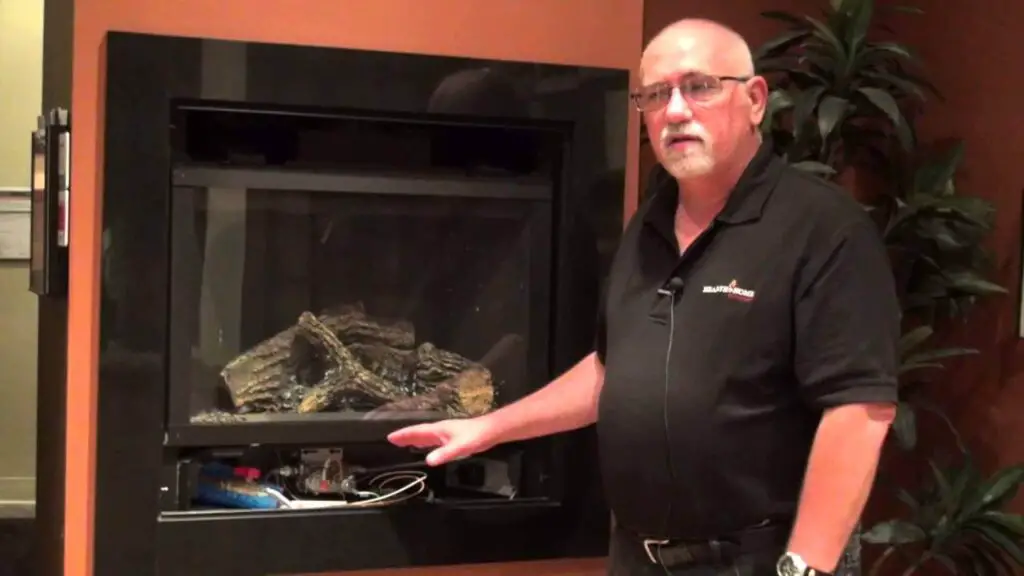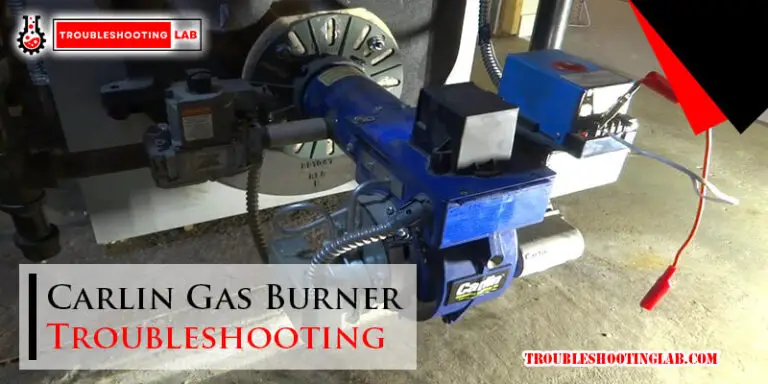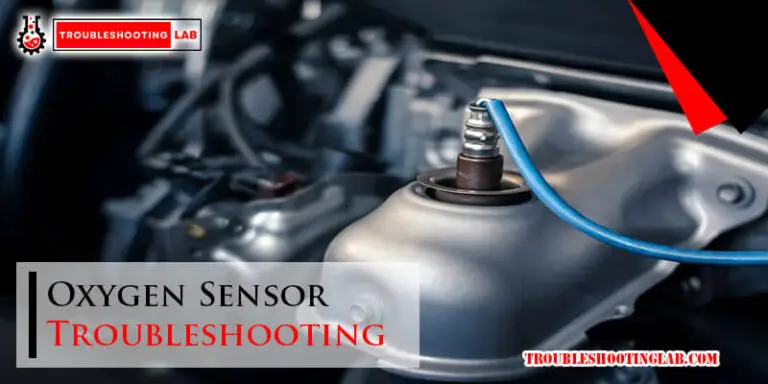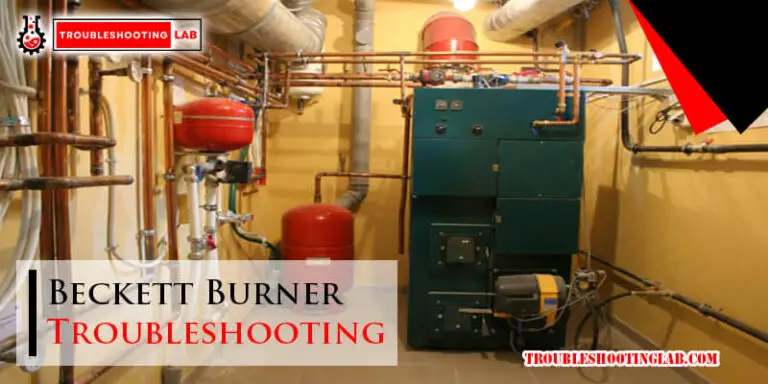Heatilator Gas Fireplace Troubleshooting: Get Your Fireplace Back in Action
If your Heatilator gas fireplace is malfunctioning, check the pilot light and gas supply first. Additionally, ensure the vents are clear and the thermostat is set correctly.
A common issue could be a dirty pilot light or a faulty thermocouple. If troubleshooting these basic steps does not fix the problem, consult the user manual for further guidance. Sometimes, a professional technician may be needed to diagnose and repair more complex issues.
By following these troubleshooting steps, you can ensure your Heatilator gas fireplace is operating safely and efficiently. Regular maintenance and proper care will also help prevent future problems and extend the life of your fireplace.

Common Issues
If you’re experiencing issues with your Heatilator gas fireplace, troubleshooting might be necessary. Common problems include pilot light issues, gas supply problems, and faulty thermocouples or thermopiles. Try checking these components first to diagnose and resolve the issue quickly.
Pilot Light Won’t Stay On
If your pilot light keeps going out, it could be due to a dirty pilot assembly or a faulty thermocouple.
No Ignition
When you try to ignite your gas fireplace but there’s no response, it may be an issue with the igniter or gas supply.
Check The Pilot Light
When troubleshooting your Heatilator gas fireplace, the first step is to check the pilot light. A malfunctioning pilot light is a common issue that can prevent your fireplace from functioning properly. Follow these steps to ensure your pilot light is in good working condition.
Inspect For Debris
Remove any debris that may be blocking the pilot light. Dust and dirt can accumulate over time and obstruct the flow of gas to the pilot light, causing it to go out. Use a small brush or compressed air to clean the area around the pilot light.
Check Thermocouple Connection
Ensure the thermocouple connection is secure. The thermocouple is a safety device that detects whether the pilot light is lit. If the connection is loose or dirty, it may not be able to detect the flame, causing the gas supply to shut off. Check that the thermocouple is properly positioned and tighten any loose connections.
Ignition System
The ignition system in your Heatilator gas fireplace is crucial for ensuring the efficient operation of the unit. It is responsible for providing the spark to ignite the gas, starting the fire and creating warmth and ambiance. Proper maintenance and troubleshooting of the ignition system can help address common issues and ensure your fireplace functions optimally.
Inspect Ignition Switch
The ignition switch serves as a vital component of the ignition system in your gas fireplace. Regularly inspect the switch to ensure it is free from any dirt, buildup, or damage. Clean and remove any debris or foreign particles that may be affecting its performance. Check for any signs of wear or corrosion on the connections, and securely tighten any loose wiring to prevent faulty ignition.
Check Wiring
Proper wiring is essential to the functionality of the ignition system. Thoroughly examine the wiring to detect any signs of fraying, damage, or loose connections. Verify that the wiring is securely connected to the ignition components and replace any damaged wires as needed. Ensure that the wires are not pinched or obstructed, as this can impede the flow of electricity required for ignition.
Gas Supply
Troubleshooting a Heatilator gas fireplace involves checking the gas supply, pilot light, and ignition system for potential issues. Ensure proper gas flow and address any obstructions or faulty components to effectively resolve heating problems. Regular maintenance and professional inspection can prevent common gas fireplace malfunctions.
Gas Supply
When troubleshooting a Heatilator gas fireplace, one of the first areas to check is the gas supply. If the fireplace is not getting enough gas, it may cause issues such as weak flames or the unit not lighting at all. Here are two important factors to check when it comes to the gas supply:
Check Gas Valve
The gas valve controls the flow of gas into the fireplace. It’s essential to ensure that the valve is fully open and functioning properly. Start by locating the gas valve, which is usually located near the gas line. Inspect the valve to make sure it is turned to the “on” position. If it is turned off or only partially open, turn it all the way to the “on” position and check if the flames improve or if the unit starts lighting. If the valve appears to be faulty, it may need to be replaced by a certified technician.
Inspect the gas line
Inspect Gas Line
The gas line brings the gas supply from the main source to the fireplace. It’s essential to ensure that there are no blockages or leaks in the line that could affect the gas flow. Carefully inspect the gas line for any signs of damage, such as cracks, corrosion, or loose connections. If you notice any issues, it is crucial to contact a professional technician to repair or replace the line. Regular maintenance and inspection of the gas line can prevent potential problems and ensure the fireplace operates safely and efficiently.
Here’s a summary of the key points to remember when troubleshooting the gas supply for your Heatilator gas fireplace:
– Check the gas valve to ensure it is fully open and functioning properly.
– If the gas valve is faulty, it may need to be replaced by a certified technician.
– Inspect the gas line for any blockages, leaks, or damage.
– Contact a professional technician if you notice any issues with the gas line.
– Regular maintenance and inspection can prevent potential problems and ensure safe operation.
By following these troubleshooting steps for the gas supply, you can resolve common issues with your Heatilator gas fireplace and enjoy its warmth and ambiance with confidence.
Regular Maintenance
Regular maintenance is essential for keeping your Heatilator gas fireplace in optimal condition. By following a few simple steps, you can ensure that your fireplace operates efficiently and safely. This section will take you through some important regular maintenance tasks to keep your gas fireplace running smoothly.
Clean The Vent
Keeping the vent clean is crucial for the proper functioning of your gas fireplace. Over time, debris such as dust, pet hair, and lint can accumulate inside the vent, obstructing the airflow and causing potential safety hazards. Regularly cleaning the vent helps maintain proper ventilation and prevents carbon monoxide from building up in your home.
- Start by turning off the fireplace and allowing it to cool down completely.
- Remove the front cover of the fireplace to expose the vent.
- Using a brush or vacuum cleaner, gently remove any debris or dust from the vent.
- Make sure to clean both the inside and outside of the vent thoroughly.
- Replace the front cover securely once you have completed the cleaning process.
Inspect Gas Logs
Regularly inspecting the gas logs is vital to ensure the safe and efficient operation of your gas fireplace. Inspecting the logs allows you to identify any damages, cracks, or blockages that may affect the performance of your fireplace.
- Turn off the fireplace and wait until it has cooled down before starting the inspection.
- Examine each gas log carefully, looking for any signs of damage or deterioration.
- If you notice any cracks, chips, or broken pieces, it is important to replace them as soon as possible. Damaged logs can affect the flame patterns and result in inefficient burning.
- Check for any obstructions or debris that may have accumulated around the logs. Clear away any debris to ensure proper airflow.
- Confirm that all the gas logs are properly aligned and secure. Adjust or tighten them if necessary.
Maintaining the regular maintenance schedule for your Heatilator gas fireplace will not only prolong its lifespan but also contribute to the overall safety and efficiency of the unit. By cleaning the vent regularly and inspecting the gas logs, you can enjoy a beautiful and warm fire year after year.
Remember that professional maintenance and servicing are also crucial for keeping your gas fireplace in top condition. Consulting a certified technician ensures all components are inspected and serviced properly, maximizing the performance and safety of your Heatilator gas fireplace.
Frequently Asked Questions For Heatilator Gas Fireplace Troubleshooting
How Do You Troubleshoot A Heatilator Gas Fireplace?
To troubleshoot a Heatilator gas fireplace, start by checking the pilot light, gas supply, and thermostat settings. Ensure the vents are clear and the igniter is functioning properly.
Why Won’t My Heatilator Gas Fireplace Ignite?
If your Heatilator gas fireplace won’t ignite, first make sure the gas valve is open. Check the pilot light and ensure it’s lit and the flame is touching the thermocouple. If the issue persists, contact a professional for further assistance.
What Can Cause A Heatilator Gas Fireplace To Produce A Weak Flame?
A weak flame in a Heatilator gas fireplace can be caused by low gas pressure, a clogged burner, or a dirty orifice. Check for any obstructions and ensure the gas pressure is at the proper level.
How Do I Clean The Glass On My Heatilator Gas Fireplace?
To clean the glass on your Heatilator gas fireplace, use a non-abrasive cleaner and a soft cloth. Avoid using ammonia-based or abrasive cleaners as they can damage the glass. Gently wipe the glass to remove any dirt or residue.
Why Is My Heatilator Gas Fireplace Producing A Strange Odor?
A strange odor from a Heatilator gas fireplace may be caused by dust or debris on the burners or logs. Clean the burners and logs thoroughly to remove any buildup. If the odor persists, have a professional inspect the unit for any gas leaks.
Conclusion
Troubleshooting your Heatilator gas fireplace is not as daunting as it may seem. By following the steps outlined in this guide, you can easily identify and resolve common issues. Regular maintenance and proper usage are key to keeping your fireplace in top condition for years to come.
Keep enjoying the warmth and ambiance of your gas fireplace hassle-free!





